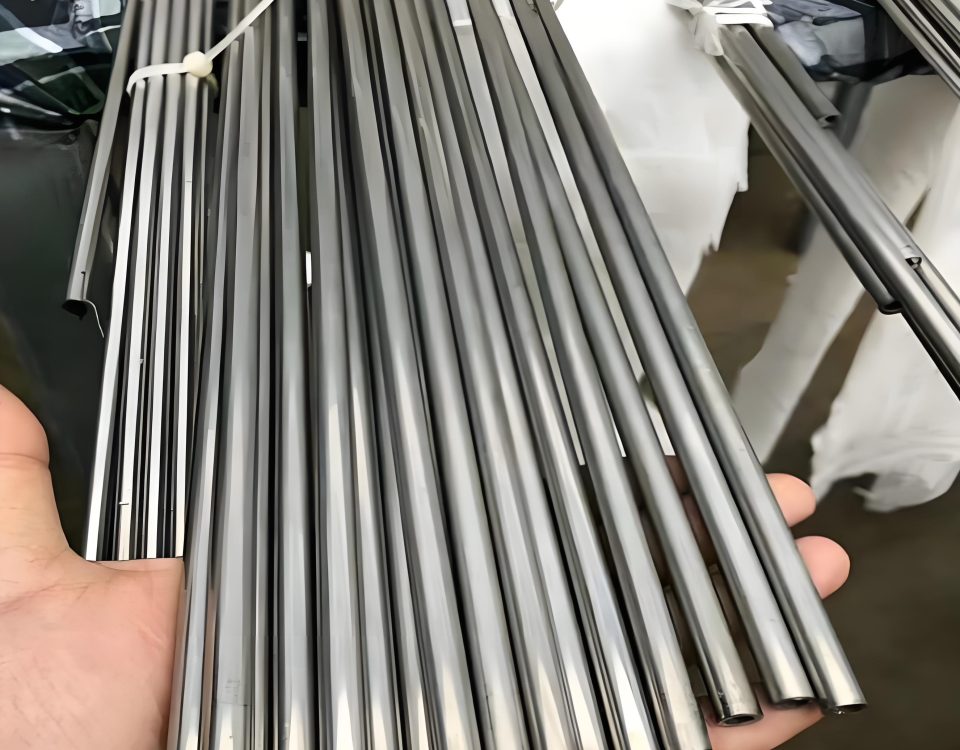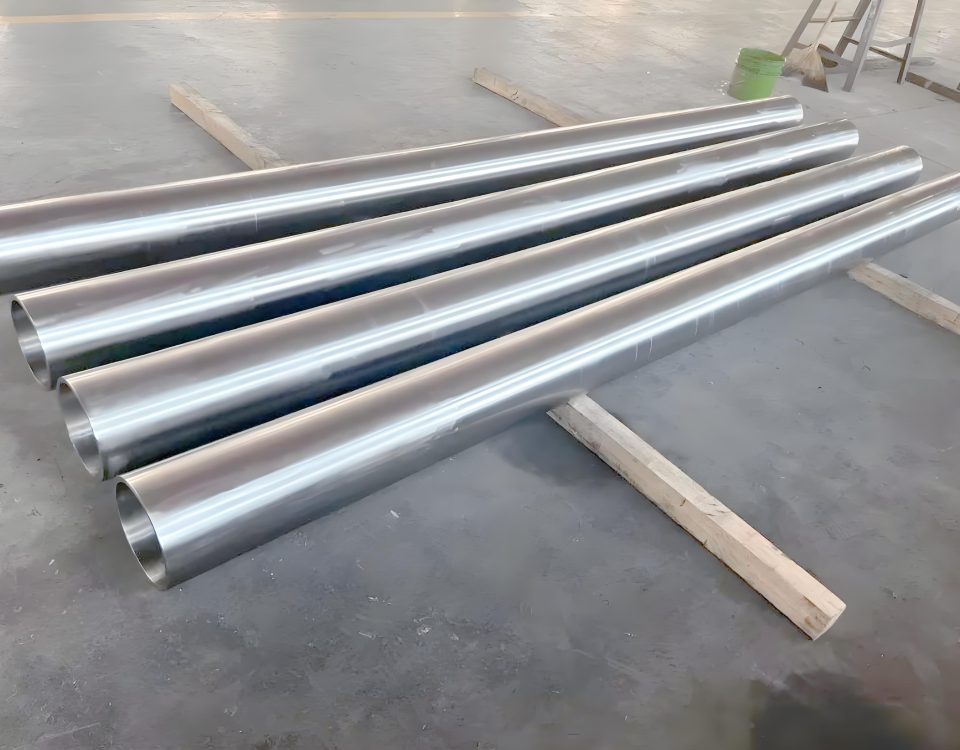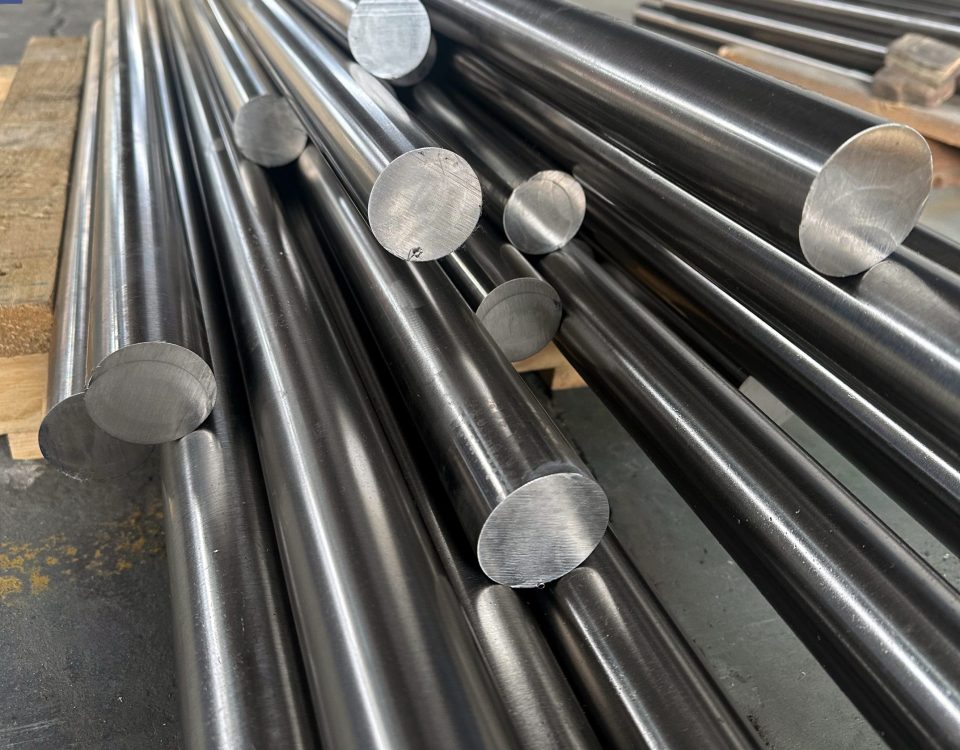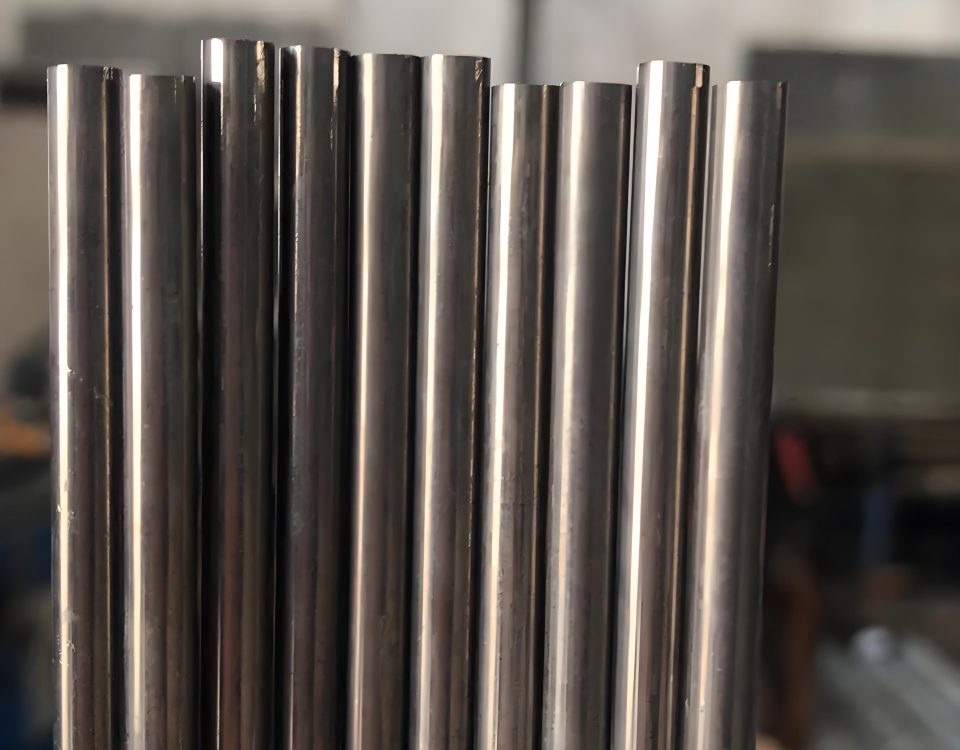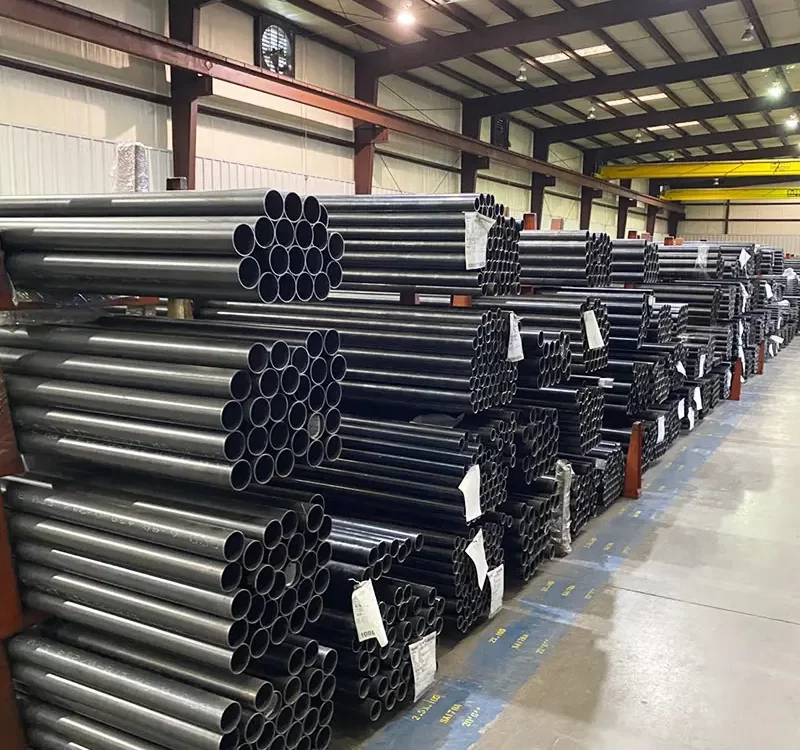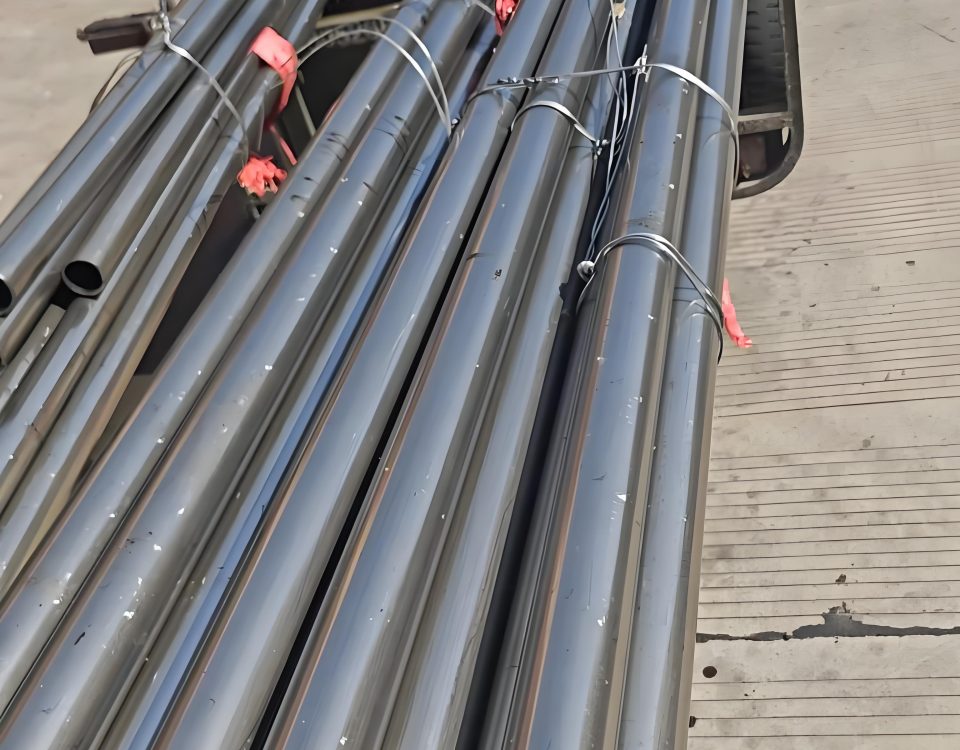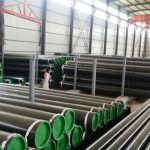
X70 Steel Pipelines – Technical Measures for Welding and Corrosion Protection
October 26, 2025The creation of an article of this magnitude, detailing a specific and critical range of metallurgical products like the ASME/ASTM SA/A334 GR.1, GR.6, and GR.8 Seamless Alloy Steel Pipes for Low-Temperature Service, requires a deep, almost meditative immersion into the world of materials science, engineering standards, and the unforgiving environments these components are designed to conquer. It’s not merely a product description; it’s an exploration of the physics of failure averted, the chemistry of toughness, and the rigorous discipline demanded by international codes. We must begin by painting the picture of the environment itself, the sheer necessity that birthed these specialized alloys, moving through the foundational standards, dissecting the nuanced differences between each grade, and finally showcasing the manufacturing prowess required to bring these critical pieces of infrastructure into existence, all while maintaining a natural, comprehensive flow of thought that builds upon itself without resorting to rigid, formulaic prose, ensuring each section provides the depth necessary to meet the demanding length requirements.
🌍 The Imperative of Cryogenic Integrity: Defining the Low-Temperature Challenge
The modern industrial landscape, with its ceaseless pursuit of energy efficiency, advanced chemical processing, and the global distribution of essential resources, is intrinsically linked to environments characterized by extreme cold, conditions where conventional carbon steel piping would suffer catastrophic brittle fracture, a failure mode that is sudden, violent, and inherently unpredictable, thus posing an existential threat to plant safety and operational continuity, making the choice of material for piping in such services a decision of paramount engineering responsibility and commercial foresight. The term “low-temperature service” itself encompasses a vast spectrum, ranging from mildly chilled refrigeration loops down to the absolutely brutal cryogenic temperatures necessary for handling liquefied natural gas (LNG), liquid nitrogen, oxygen, or even the nascent, yet rapidly expanding, infrastructure for liquid hydrogen transport, each domain demanding a material response specifically tailored to its thermal and pressure profile, and it is precisely this demanding context that justifies the existence and stringent specifications of the ASME/ASTM SA/A334 standard, which represents a metallurgical covenant between manufacturer and end-user, guaranteeing that the delivered pipe possesses the requisite notch toughness and microstructural stability to withstand the intended design temperature without compromising its pressure integrity. The very act of cooling steel introduces a profound shift in its mechanical behavior; the ductility that defines its room-temperature performance diminishes, the crystalline structure becomes less accommodating to plastic deformation, and the material’s ability to absorb energy from impact—measured through the critical Charpy V-notch test—plummets to dangerously low levels, hence the A334 designation mandates not just a specific chemical recipe, but also precise heat treatment protocols—normalization, normalizing and tempering, or quenching and tempering, depending on the grade—all orchestrated to refine the grain structure, eliminate residual stresses, and crucially, shift the ductile-to-brittle transition temperature (DBTT) well below the minimum anticipated service temperature, a complex, expensive, and meticulously controlled process that differentiates a standard pipe mill from a specialist manufacturer of critical, low-temperature alloy seamless tubing, ensuring that every meter of pipe leaving our facility is not merely a component, but a certified safeguard against environmental extremes, thereby reinforcing the global supply chain for critical energy and chemical processes. This seamless flow of material logic, from the environmental challenge to the engineering solution embedded within the SA/A334 standard, establishes the foundational necessity for the products we manufacture: robust, reliable, and rigorously tested alloy steel piping capable of maintaining structural integrity in a domain where failure is simply not an option.
📘 The Standardized Backbone: Decoding ASME/ASTM SA/A334 and Seamless Integrity
The authority and reliability of our low-temperature piping rest entirely upon unwavering adherence to the twin standards of ASME SA-334 and ASTM A334, a pairing that reflects the dual jurisdictions of material specification (ASTM) and construction/boiler code application (ASME), where the “SA” prefix in the ASME Boiler and Pressure Vessel Code (BPVC) signifies the material’s acceptance into the code’s jurisdiction for pressure-retaining components, ensuring its pedigree for use in the most demanding process plants, power systems, and pressure vessels worldwide, thereby offering an unparalleled level of regulatory and engineering confidence that is absent in less codified materials. The A334 specification, titled “Standard Specification for Seamless and Welded Carbon and Alloy Steel Tubes for Low-Temperature Service,” immediately highlights a critical distinction: our focus is exclusively on the seamless product, a manufacturing choice that is fundamentally driven by the desire for maximum integrity in high-stress, low-temperature applications, particularly those involving high internal pressure or cyclic thermal loading, scenarios where the potential discontinuity of a weld seam, however meticulously fabricated and inspected, introduces an unnecessary variable of risk that critical service environments simply cannot tolerate. The seamless process begins with a solid billet of steel, which is heated and then pierced by a mandrel to create a hollow shell, subsequently rolled and drawn to the precise dimensional tolerances and wall thickness, resulting in a pipe that is entirely monolithic, free from the stresses and potential flaws associated with the heat-affected zone of a weld, thus offering superior homogeneity, concentricity, and stress distribution capabilities crucial for resisting brittle fracture initiation points at cryogenic temperatures, a metallurgical and engineering advantage that vastly outweighs the often higher production cost compared to welded equivalents. Furthermore, the A334 standard is not a monolithic entity but rather a collection of material grades, each specifically defined by its chemical composition and mandatory minimum Charpy V-notch impact test temperature, a critical parameter that serves as the material’s formal certification of low-temperature toughness; for example, Grade 1 mandates testing at $-45^{\circ}\text{C}$ ($-50^{\circ}\text{F}$), Grade 6 at $-45^{\circ}\text{C}$ ($-50^{\circ}\text{F}$), and the specialized Grade 8 at an ultra-low $-195^{\circ}\text{C}$ ($-320^{\circ}\text{F}$), a stark demonstration of how the standard systematically addresses the full spectrum of industrial cold services, from general refrigeration to the handling of liquid natural gas, a distinction which necessitates precise control over the alloying elements, particularly the introduction of nickel in the most demanding grades, a topic that demands its own detailed exploration to fully appreciate the sophisticated materials engineering involved in the compliance and manufacturing of these essential piping components. This seamless philosophy, deeply rooted in the rigorous demands of the ASME/ASTM regulatory framework, forms the bedrock of our product offering, guaranteeing superior performance, structural uniformity, and certified reliability under the most challenging thermal conditions imaginable in industrial practice.
🔬 The Metallurgical Trinity: Dissecting Grades 1, 6, and 8
To truly appreciate the value proposition of our product range, one must move beyond the shared standard and delve into the unique metallurgical identities and intended applications of each of the three core grades we produce—GR.1, GR.6, and the highly specialized GR.8—which collectively offer a structured, progressive solution to the varying demands of industrial low-temperature service, essentially forming a specialized materials trinity designed to operate across a vast thermal gradient with assured integrity. Grade 1 (GR.1) represents the entry point into certified low-temperature toughness, primarily a carbon-manganese-silicon steel, where its chemical composition is carefully balanced to ensure its DBTT is safely below its required minimum service temperature of $-45^{\circ}\text{C}$ ($-50^{\circ}\text{F}$), making it an economical yet fully compliant choice for services like moderate refrigeration, coolants, and process streams in colder climates, often serving as the robust link between standard carbon steel piping (like A106, which typically has a much higher DBTT) and the deeper cryogenic applications, a workhorse material whose relatively modest alloying allows for easier welding and fabrication while still providing the essential, code-mandated safety margin against brittle fracture for applications that demand a guaranteed temperature ceiling. Moving up the scale, Grade 6 (GR.6) is often considered the industry’s go-to standard for general low-temperature pressure piping, sharing a similar C-Mn-Si base to GR.1 but often incorporating slightly higher manganese content and more stringent control over residual elements, a minor compositional shift that significantly enhances its ability to maintain impact toughness down to the same $-45^{\circ}\text{C}$ ($-50^{\circ}\text{F}$) required temperature but often with a higher minimum absorbed energy value in the Charpy test, thereby providing an extra layer of structural resilience and a margin of safety for more critical or high-pressure applications within that thermal range, making it ubiquitous in oil and gas process piping, ammonia refrigeration, and various intermediate heat exchange systems where reliability is paramount but the full extreme of cryogenics is not yet encountered, essentially offering a robust balance of weldability, cost-effectiveness, and assured mechanical performance under sustained low-temperature conditions. Finally, we arrive at Grade 8 (GR.8), which represents a quantum leap in metallurgical complexity and capability, immediately identifiable by its minimum $9\%$ nickel content, an element that fundamentally transforms the steel’s microstructure by stabilizing the face-centered cubic (FCC) austenitic phase, even at temperatures approaching absolute zero, a unique trait that grants it extraordinary notch toughness and ductility down to its mandated Charpy impact test temperature of $-195^{\circ}\text{C}$ ($-320^{\circ}\text{F}$), the temperature of boiling liquid nitrogen and within the operational range for LNG (Liquefied Natural Gas) transport and storage, making it the non-negotiable material choice for all cryogenic plant headers, LNG loading arms, and the extremely cold sections of air separation units (ASUs) where components handle liquid oxygen or argon, a performance that requires not only the introduction of nickel but also a meticulous, controlled heat treatment—typically normalizing and tempering, or quenching and tempering—to ensure the nickel is fully integrated and the grain structure is maximally refined, thereby transforming the material into a reliable fortress against the extreme thermal contraction and stress concentrations inherent in deep cryogenic service, truly a specialized alloy for the most demanding frontiers of industrial technology, and our ability to seamlessly manufacture and certify all three grades—GR.1, GR.6, and GR.8—positions our company not just as a supplier, but as a comprehensive partner in low-temperature material solutions.
🏭 Manufacturing Excellence: The Indispensable Role of Seamless Production and Heat Treatment
The transformation of raw alloy billet into a certified SA/A334 seamless pipe is an industrial ballet of immense heat, pressure, and precision, a complex sequence of manufacturing steps that are intrinsically linked to the material’s final mechanical properties and its ability to meet the rigorous demands of low-temperature service, especially in comparison to the inherent uncertainties of welded products for critical applications, solidifying our commitment to the seamless process as the gold standard for cryogenic integrity. This process typically commences with the heating of the solid, cylindrical alloy steel billet to temperatures exceeding $1200^{\circ}\text{C}$, rendering it highly plastic, after which it enters the piercing mill, a high-power operation where a rotating billet is forced over a stationary piercing point, or mandrel, creating a rough hollow shell, a critical step that must be executed with absolute control over temperature and speed to prevent internal laps or defects that could later become fracture initiation sites under cryogenic stress. Following piercing, the pipe undergoes a series of hot-rolling and reeling processes to accurately reduce its outer diameter (OD) and wall thickness (WT), followed by a final sizing pass to achieve the required dimensional precision stipulated by the A334/A530 tolerances, but the mechanical work alone, while forming the pipe, is insufficient to guarantee the low-temperature performance, necessitating the most crucial stage: the dedicated heat treatment regime, which is meticulously varied based on the specific grade being produced. For GR.1 and GR.6, this usually involves normalizing and tempering—where normalizing involves heating the steel above its critical transformation temperature and air cooling to produce a fine, uniform grain structure, and tempering involves reheating to a lower temperature to enhance ductility and toughness while relieving internal stresses, a process engineered to push the DBTT down to comfortably meet the $-45^{\circ}\text{C}$ requirement. However, for the high-nickel GR.8, the heat treatment is even more exacting, often involving a quench and temper or a specialized double-normalize and temper cycle, the primary goal of which is to maximize the stability of the nickel-induced austenitic structure and ensure the exceptionally high impact toughness required at $-195^{\circ}\text{C}$ is achieved, a feat of thermal engineering that requires precise furnace control, rapid and uniform cooling rates, and continuous pyrometric monitoring, followed by a series of non-destructive examinations (NDE), including ultrasonic testing (UT) and hydrostatic pressure testing, to verify the absence of any internal or external flaws and to confirm the pipe’s pressure-retaining capability, alongside detailed dimensional checks for straightness, concentricity, and wall thickness uniformity. The cumulative effect of this seamless manufacturing pathway, coupled with the grade-specific, controlled thermal processing, is a final product that not only conforms to the material specification but possesses a microstructure inherently optimized for impact resistance and structural stability at the lowest industrial temperatures, a level of quality assurance that transcends mere compliance and becomes a guarantee of long-term operational safety and reliability for our clientele globally, solidifying the choice of our seamless product as the superior engineering solution for critical low-temperature applications across all defined SA/A334 grades.
📐 Dimensions, Specifications, and Data Certification: The Language of Precision
In the realm of critical piping, the assurance of performance at extreme temperatures is only one half of the equation; the other, equally critical half, is the absolute conformity to dimensional and technical specifications, a domain governed by the A530/SA530 standard (General Requirements for Specialized Carbon and Alloy Steel Pipe), which dictates the permissible variances in outer diameter (OD), wall thickness (WT), length, and straightness, ensuring compatibility with standard fittings and the smooth execution of field fabrication, a level of precision that is indispensable when dealing with complex, multi-component piping systems such that the seamless pipes we manufacture must not only be chemically sound and mechanically tough but also geometrically perfect within the narrowest of industrial tolerances. The standard range of pipe sizes for A/SA334 typically follows the ASME B36.10M standard for nominal pipe size (NPS), often ranging from $\text{NPS }\frac{1}{2}\text{ inch}$ up to $\text{NPS }24\text{ inches}$ and beyond, covering a vast array of service pressure requirements by offering various schedule numbers, such as $\text{Schedule 40, Schedule 80, Schedule 160, and XXS}$, each representing a distinct wall thickness-to-diameter ratio, directly influencing the pipe’s maximum allowable working pressure (MAWP), especially vital in low-temperature service where pressure and thermal stresses compound, and we maintain the capability to produce pipes across the full spectrum of these schedules, often providing customized wall thicknesses to meet specific project pressure design requirements where standard schedules may not suffice, all while adhering to the critical wall thickness tolerance of typically $\pm 12.5\%$ and tight OD tolerances to ensure proper fit with flanges and valves. Beyond these dimensional parameters, the technical specification also mandates specific non-destructive testing (NDE) protocols for every length of pipe, most notably the hydrostatic test or a suitable non-destructive electric test (e.g., eddy current or ultrasonic testing) in lieu of the hydrostatic test, designed to verify the pipe’s pressure containment integrity and the absence of linear discontinuities, a final, essential check before certification, ensuring that the structural integrity validated by the Charpy test is complemented by proof of pressure competence. Crucially, the entire lifecycle of testing and specification compliance is documented in the Material Test Report (MTR), often referred to as a $\text{3.1 or 3.2 Certificate}$ according to EN 10204, a document that serves as the pipe’s immutable pedigree, detailing the chemical composition (heat analysis), mechanical properties (tensile strength, yield strength, elongation), and, most critically for this standard, the specific Charpy V-notch impact test results, including the test temperature and the minimum absorbed energy for each set of three specimens, thereby providing the engineer with the explicit, verifiable data required for final system sign-off and ensuring traceability from the finished component all the way back to the originating heat of steel, transforming the physical pipe into a fully certified and documented pressure-retaining asset. Our company places immense importance on the accuracy and completeness of this documentation, recognizing that in critical service industries like oil and gas, chemical processing, and cryogenics, the paperwork is as vital as the metal itself, a reflection of the comprehensive quality management system that underpins every seamless pipe manufactured under the A/SA334 banner.
⛽ Applications, Reliability, and the Economy of Assured Safety
The functional utility of ASME/ASTM SA/A334 GR.1, GR.6, and GR.8 seamless pipe transcends mere mechanical capability; it is a foundational pillar supporting entire sectors of the global economy that rely on the reliable handling and processing of fluids and gases at low temperatures, making the investment in these certified materials an economy of assured safety and long-term operational uptime, a compelling justification for the initial material premium. The applications are diverse but uniformly critical: the high-nickel GR.8 is the undisputed champion of the Liquefied Natural Gas (LNG) supply chain, utilized extensively in marine carriers, land-based liquefaction plants, and regasification terminals, where it handles LNG at approximately $-162^{\circ}\text{C}$ ($-260^{\circ}\text{F}$), a service that only austenitic alloys like $9\% \text{ Ni}$ steel can reliably withstand without succumbing to catastrophic embrittlement, extending its use into the core components of Air Separation Units (ASUs) that produce high-purity industrial gases like liquid oxygen, nitrogen, and argon. Meanwhile, the robust GR.6 finds its most widespread use in general industrial refrigeration loops, cold-process chemical manufacturing, and the vast network of piping required for processing natural gas in cold climates, particularly upstream oil and gas facilities operating in Arctic or sub-Arctic regions where ambient temperatures frequently dip below $-40^{\circ}\text{C}$, a domain where the GR.6’s $-45^{\circ}\text{C}$ certified toughness provides the essential margin against environmental and operational cold soak, ensuring that critical utility lines, heat exchanger bundles, and process piping maintain integrity even during severe winter conditions. Grade 1 (GR.1), while sharing the same $-45^{\circ}\text{C}$ minimum test temperature as GR.6, often serves in less severe pressure applications or where the temperature is more consistently near the upper range of the low-temperature threshold, such as in certain chiller systems, secondary coolant lines, and as a more economic alternative for sections of plants in moderately cold locations that require low-temperature certification but do not involve the extremely high pressures or volatile fluids handled by GR.6 lines, offering a balanced solution that meets code requirements without the over-specification of material. The overarching feature unifying all three grades is the inherent reliability granted by the seamless construction and the mandatory impact testing; the cost of a piping failure in these services—whether due to lost production, environmental damage from a release of volatile substances, or, most importantly, the threat to human life posed by explosive depressurization or exposure to cryogenic fluids—vastly outweighs any short-term savings from using uncertified or standard materials, thereby positioning our SA/A334 products as a strategic investment in Total Cost of Ownership (TCO) reduction, minimizing the risk of expensive shutdowns and regulatory penalties over the operational lifespan of the plant. This commitment to delivering verified, application-specific low-temperature integrity means our pipes are not just commodities but essential, certified components of a safe and efficient global industrial infrastructure, a role we fulfill with meticulous manufacturing and rigorous quality control.
💎 Key Features and Competitive Edge: Beyond Mere Compliance
The differentiation of our seamless ASME/ASTM SA/A334 GR.1, GR.6, and GR.8 piping in a globally competitive marketplace extends far beyond simply meeting the minimum requirements of the standard; it is rooted in a set of operational and technical features that collectively deliver superior value, reliability, and project flexibility, ensuring that our products are the first choice for engineers designing critical low-temperature systems, an advantage built upon continuous process improvement and an ingrained culture of quality above all else. Foremost among these features is the Guaranteed Superior Impact Toughness, where our internal quality metrics often target Charpy V-notch absorbed energy values that are significantly higher than the mandated minimums specified in the A334 standard, a proactive measure that provides clients with an additional, unquantified margin of safety against unforeseen pressure spikes, thermal transients, and stress concentrations that can occur during system startup or operational upsets, particularly critical for the high-nickel GR.8 where consistently high toughness at $-195^{\circ}\text{C}$ is a hallmark of truly exceptional material processing. Complementing this is the Enhanced Microstructural Uniformity conferred by our modern seamless production lines and highly controlled, grade-specific heat treatment furnaces, which ensures minimal variation in mechanical properties along the pipe length and circumference, a homogeneity that translates directly into predictable, reliable welding and fabrication performance on-site, minimizing the risk of costly rework or unexpected material behavior during the crucial construction phase, a major concern for nickel-bearing alloys like GR.8. Furthermore, we offer Unrivaled Dimensional Precision and Customization, with the capability to supply pipes not only in standard schedules but also in non-standard, heavier wall thicknesses and custom cut lengths, which can significantly reduce the need for field-welding and waste material, thereby optimizing project efficiency and reducing overall fabrication costs, a level of service flexibility that is often difficult to obtain from mass-market suppliers. For the end-user, the pipe’s Proven Weldability, particularly for the $9\% \text{ Ni}$ Grade 8—which demands specialized welding procedures and filler materials—is significantly improved by the consistently high quality of our base metal, free from the segregation and inclusions that can complicate the execution of low-temperature-specific, high-integrity welds, allowing for smoother and more reliable construction timelines when executed by certified contractors. Finally, our commitment to Total Traceability and Certification is a key competitive advantage, providing comprehensive Material Test Reports (MTRs) that include all chemical, mechanical, and impact test data, validated by independent third-party inspection agencies (as per $\text{3.2 certification}$ when required), which significantly streamlines the client’s quality assurance and regulatory approval processes, transforming material procurement from a logistical task into a certified component of the project’s risk management strategy, ultimately distinguishing our SA/A334 product line as the premium choice for performance, safety, and project execution efficiency in low-temperature and cryogenic applications globally.
📈 Future Frontiers and Sustainability: The Role of Low-Temp Steels in a Changing World
The trajectory of global energy and industrial infrastructure points toward increasingly sophisticated and temperature-challenging operations, a future where the seamless ASME/ASTM SA/A334 grades we produce will not only remain relevant but will take on new, critical roles, particularly in the emerging sectors of energy transition and sustainability, demanding a continuous focus on material science and process efficiency in our manufacturing operations. One of the most significant upcoming frontiers is the Hydrogen Economy, specifically the infrastructure required for the transport and storage of Liquid Hydrogen ($\text{LH}_{2}$), which demands temperatures near $-253^{\circ}\text{C}$ ($-423^{\circ}\text{F}$), a thermal regime that pushes even the $9\% \text{ Ni}$ Grade 8 to its limit and often necessitates austenitic stainless steels like $\text{ASTM A312 Grade TP304L}$ or higher nickel alloys; however, the development and refinement of $9\% \text{ Ni}$ steels like GR.8 are fundamentally tied to the metallurgical knowledge base required to service these deeper cryogenic systems, and our experience in producing high-integrity GR.8 seamless pipe positions us at the forefront of this developmental curve, ready to adapt and manufacture the next generation of certified cryogenic alloys as the $\text{LH}_{2}$ market matures. Similarly, the growing global focus on Carbon Capture, Utilization, and Storage (CCUS) involves the compression and often liquefaction of carbon dioxide ($\text{CO}_{2}$), which can present low-temperature challenges, particularly during phase transitions or in depressurization scenarios where the Joule-Thomson effect can cause significant localized cooling, creating a new, large-scale application for certified low-temperature steels like GR.6 and GR.1 to ensure pipeline integrity and prevent the risk of brittle fracture in these essential environmental projects. Our commitment to Sustainability is also intrinsically linked to our production process; by optimizing the seamless manufacturing line and heat treatment cycles, we aim to reduce energy consumption per unit of pipe and minimize material waste, thereby reducing the environmental footprint of our products, a commitment that goes hand-in-hand with ensuring the longevity of the installed product, as the use of high-quality, certified SA/A334 pipe directly translates into decades of reliable service, avoiding the need for premature replacement and the associated energy and material costs. Furthermore, the rigorous quality control and certification embedded in the A/SA334 standard are, in themselves, a form of sustainability, guaranteeing that the high-value alloy content is used effectively and reliably for its intended critical service life, avoiding catastrophic failures that often result in significant environmental and material loss, a holistic view of manufacturing responsibility that encompasses both the production phase and the operational lifespan of the installed pipe, confirming that the manufacturing of critical, high-integrity low-temperature piping is not just an engineering requirement but an active contribution to a safer, more efficient, and more sustainable industrial future for the entire planet, ensuring that our specialized GR.1, GR.6, and GR.8 seamless pipe solutions are ready to meet the evolving demands of the twenty-first century’s most challenging energy and environmental infrastructure projects.
📋 Consolidated Technical Reference Tables for ASME/ASTM SA/A334
To provide a clear, structured reference, the following tables consolidate the technical specifications, material characteristics, dimensions, applications, and features of our ASME/ASTM SA/A334 GR.1, GR.6, and GR.8 Seamless Alloy Steel Pipes, complementing the detailed narrative above and serving as an essential quick-reference guide for engineers and procurement specialists.
Table 1: Material and Standards Overview
| Parameter | GR.1 Seamless Pipe | GR.6 Seamless Pipe | GR.8 Seamless Pipe |
| Standard | ASME SA-334 / ASTM A334 | ASME SA-334 / ASTM A334 | ASME SA-334 / ASTM A334 |
| Material Type | Low-Temp C-Mn Steel | Low-Temp C-Mn-Si Steel | 9% Nickel Alloy Steel |
| Manufacturing | Seamless (Hot Finished / Cold Drawn) | Seamless (Hot Finished / Cold Drawn) | Seamless (Hot Finished / Cold Drawn) |
| Heat Treatment | Normalized and Tempered (N&T) or Quenched and Tempered (Q&T) | Normalized and Tempered (N&T) or Quenched and Tempered (Q&T) | Specialized Treatment (e.g., Double N&T or Q&T) |
| General Spec | ASTM A530/SA530 (General Requirements) | ASTM A530/SA530 (General Requirements) | ASTM A530/SA530 (General Requirements) |
Table 2: Key Parameters (Chemical Composition & Impact Requirements)
| Parameter | GR.1 (Max. %) | GR.6 (Max. %) | GR.8 (Target %) |
| Carbon (C) | $0.30$ | $0.30$ | $0.13$ max |
| Manganese (Mn) | $1.06$ | $1.06$ | $0.90$ max |
| Silicon (Si) | $0.45$ | $0.45$ | $0.60$ max |
| Nickel (Ni) | $0.40$ | $0.50$ | $8.0 – 10.0$ |
| Tensile Strength (min) | $415$ MPa ($60$ ksi) | $415$ MPa ($60$ ksi) | $690$ MPa ($100$ ksi) |
| Yield Strength (min) | $240$ MPa ($35$ ksi) | $240$ MPa ($35$ ksi) | $380$ MPa ($55$ ksi) |
| Min. Impact Test Temp. | $-45^{\circ}\text{C}$ ($-50^{\circ}\text{F}$) | $-45^{\circ}\text{C}$ ($-50^{\circ}\text{F}$) | $-195^{\circ}\text{C}$ ($-320^{\circ}\text{F}$) |
| Min. Avg. Impact Energy | $18$ J ($13$ ft-lbf) | $18$ J ($13$ ft-lbf) | $20$ J ($15$ ft-lbf) |
Table 3: Dimensions and Specification Range
| Specification Element | Description / Range of Production |
| Outer Diameter (OD) | NPS $\frac{1}{2}\text{ inch}$ to NPS $24\text{ inches}$ (and larger on request) |
| Wall Thickness (WT) | All standard ASME B36.10M Schedules (Sch. 40, Sch. 80, Sch. 160, XXS, etc.) |
| Length | Random (R/L), Double Random (D/R/L), or Custom Cut Lengths |
| Dimensional Tolerance | Adherence to ASTM A530/SA530 standards ($\pm 12.5\%$ on WT, tight OD tolerances) |
| Pressure Testing | $\text{Hydrostatic Test}$ or $\text{Non-Destructive Electric Test (NDE)}$ required |
| End Finish | Bevelled for welding (BWE) or Plain End (PE) |
Table 4: Applications and Features
| Grade | Primary Applications | Key Features & Advantages |
| GR.1 | Moderate Refrigeration, Process Coolant Lines, Industrial Piping in Cold Climates | Economical Low-Temp solution, Good Weldability, Certified toughness to $-45^{\circ}\text{C}$. |
| GR.6 | General Low-Temperature Process Piping, Ammonia Refrigeration, Arctic Oil/Gas Process Lines | Industry Workhorse, Superior impact properties at $-45^{\circ}\text{C}$ compared to standard carbon steel, Excellent structural reliability. |
| GR.8 | LNG (Liquefied Natural Gas) Piping, Liquid Nitrogen/Oxygen Lines, Cryogenic Storage & Transport | Highest Toughness, Stable Austenitic structure at $-195^{\circ}\text{C}$, Essential for deep cryogenic service, High tensile/yield strength. |
The Seamless Guarantee of Low-Temperature Safety
The journey from a specialized alloy billet to a fully certified ASME/ASTM SA/A334 seamless pipe is a testament to the confluence of material science, precision manufacturing, and unwavering adherence to international safety standards, embodying a guarantee of structural integrity in the most demanding cold service environments, a critical assurance that underpins the reliability of vital global infrastructure from LNG terminals to high-tech air separation units. Our dedicated production of Grade 1, Grade 6, and the advanced $9\% \text{ Nickel}$ Grade 8 seamlessly covers the entire spectrum of industrial low-temperature requirements, offering engineers and project managers a structured suite of solutions where material performance is not a projection but a certified, tested fact, backed by detailed MTRs and a manufacturing ethos that prioritizes flawlessness in every meter of pipe. The choice of our seamless product is an active decision to mitigate the inherent, catastrophic risks of brittle fracture, investing in the long-term operational safety and efficiency that only rigorously controlled, impact-tested alloy steels can provide, solidifying our position as the reliable, high-quality partner for the world’s most critical low-temperature and cryogenic piping needs.
Would you like me to elaborate on the specific non-destructive testing (NDE) methods used for these critical seamless pipes, such as the details of the Ultrasonic Testing (UT) or Eddy Current (ET) procedures, or perhaps a more focused analysis on the welding procedures required for the $9\% \text{ Nickel}$ Grade 8?



